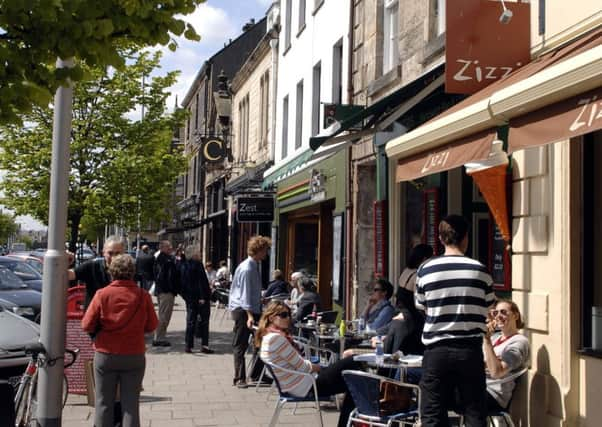Worst-off towns recover as alcohol and gambling outlets close


The number of Scottish shops and leisure outlets standing empty has dropped for the fourth consecutive year, falling to 11.7 per cent of all retail outlets and well below the high of 13 per cent seen in 2012.
However, Scottish towns, which have seen a slight improvement in high street vacancies since last year, have caught up to cities, with just 12.6 per cent of properties in both smnall and large conurbations standing empty this year, according to the report published today by the Local Data Company and the Institute for Retail Studies at the University of Stirling.
Advertisement
Hide AdAdvertisement
Hide AdThe number of cheque cashing shops has plummeted by more than a third over the past twelve months, while properties occupied by off licences have also fallen by 13.4 per cent and betting shops by 1.6 per cent.
Professor Leigh Sparks of the Institute for Retail Studies at the University of Stirling, said: “Both cities and towns are experiencing changes in structure. Leisure and service activities are growing in numbers and retail is experiencing reductions in proportionate terms. Cities are leading the way and identifying that the appropriate mix of retail and leisure that may play a role in retaining footfall across cities and towns.”
Dundee has the highest vacancy rate of Scottish cities at 22 per cent - up one per cent from last year - whilst Brechin has the highest vacancy rate of all Scottish towns, with almost one in four properties standing empty.
However, the proportion of vacant properties in Scotland is still higher than that of England and Wales, where strong retail demand in the south east and London pulls the average rate lower. Scottish retail parks have fared particularly badly as the only region to see an increase in shopping park vacancies and the highest level in the UK at 7.8 per cent.
Matthew Hopkinson, director of the Local Data Company, said: “In light of so much political uncertainty both within Scotland and the UK it is encouraging to see more shops being filled in Scottish towns and not by uses which some people consider to be high street pariahs.
“Persistent vacancy is one of the key alarm bells for any town or city and so it is encouraging to see a reduction in the number of Scottish towns showing persistent vacancy. Yet there are some where one in seven of the units have been empty for more than three years.”
Five towns - Longniddry, St Andrews, Inverurie, Dalkeith and Dunbar - have all maintained vacancy rates at four per cent or less for the past three years. However, Girvan, Kirkwall, Fort William and Ardrossan have all seen more than 15 per cent of units lying vacant for over three years.
Ullapool boasts the highest proportion of leisure outlets of anywhere in Scotland, with 42 per cent of occupied properties used for pastimes such as going to the cinema, eating out or watching concerts.
Meanwhile, Edinburgh has the most charity shops of anywhere in Scotland, with 58 - ten fewer than twelve months ago.